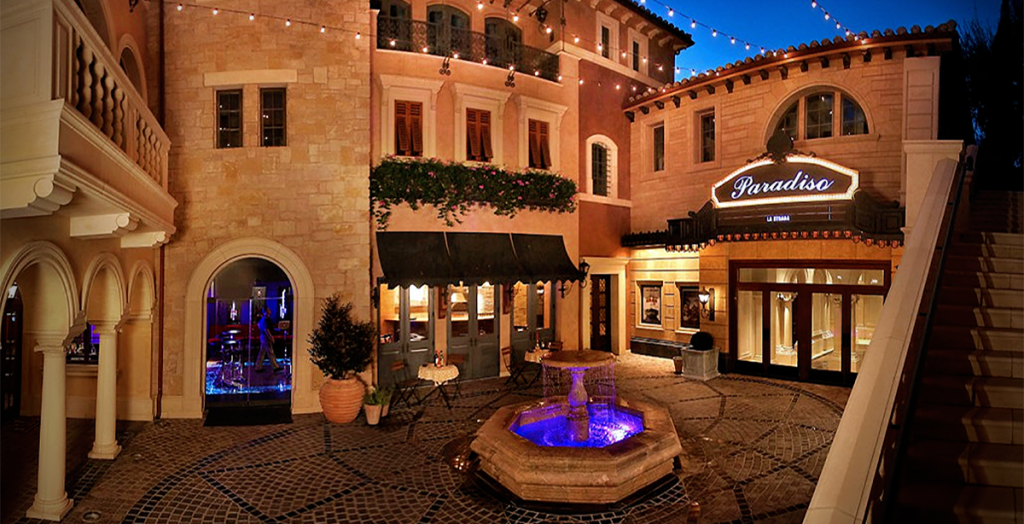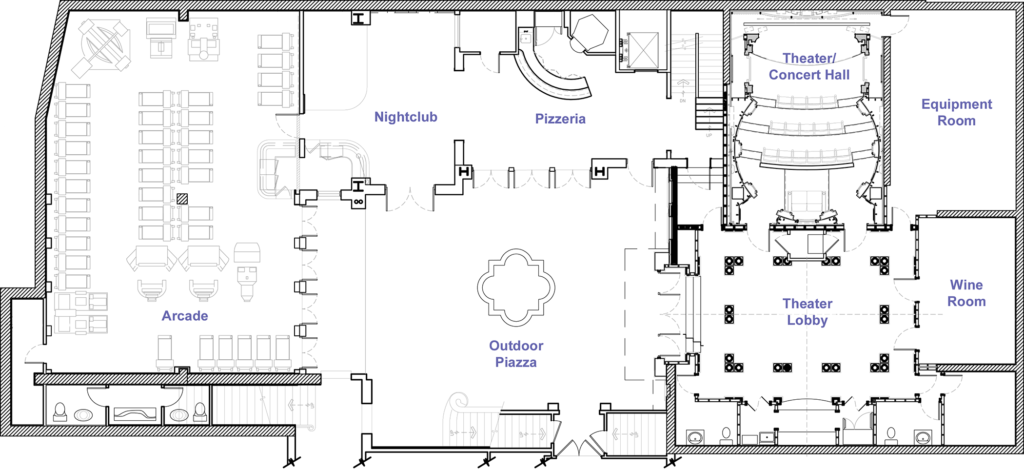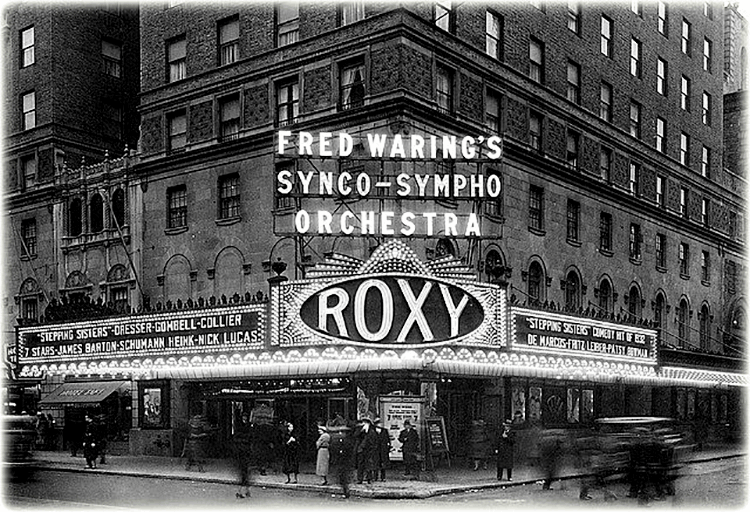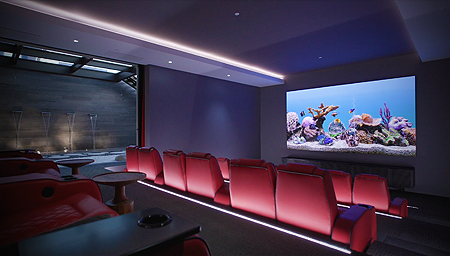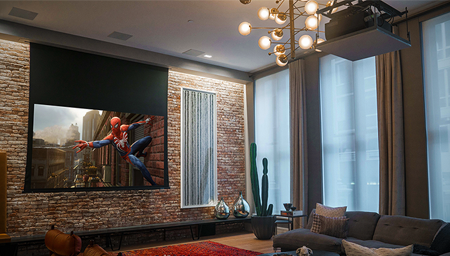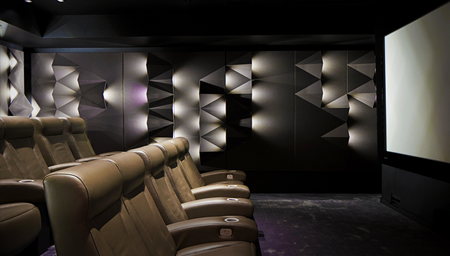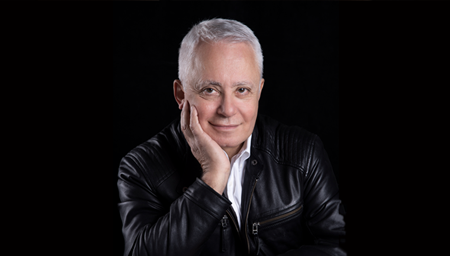Since the house is located in an Italianate enclave, he said, “We need to do something that would be very much in keeping with the neighborhood.” Which is fine, but I realized the size I had in mind for the theater exceeded the one-story height that would be allowed there. That started our endless process of digging down to create a subterranean environment.
This domestic entertainment complex includes not just one of the greatest home theaters ever but also a nightclub, a gaming arcade, and even an Italian café
by Michael Gaughn
June 1, 2020
Legendary designer Theo Kalomirakis and acoustician Steve Haas have collaborated on a number of cost-no-object home theaters, but probably none of those efforts has been as ambitious, versatile, or well-realized as the Paradiso. Seventeen years in the making, this Southern California gem is actually an entire home-entertainment complex built around an Italianate piazza. The reference-quality 15-seat home theater doubles as a fully-fledged concert hall. The nightclub features a hydraulic stage and can handle anything from a rock band to a jazz group. Next door to the club resides an arcade, containing the homeowner’s extensive collection of pinball machines and video games. There’s even a g-force flight simulator.
At a time when people are developing a new appreciation for what home entertainment has to offer, the Paradiso provides the ultimate example of what can be done when you venture outside the home theater box. I recently talked to Steve and Theo about the project’s genesis, execution, and legacy.
THEO KALOMIRAKIS The client had been dreaming about doing a theater with me and asked me to do the basement of his house, which is next to where the Paradiso is now. It had a seven-and-a-half-foot ceiling, so it was only a modest room. I did it because I liked the guy very much. He was passionate about doing something, but there was not much I could do with the space. So he sensed I was kind of compromising.
One day, he called me and said, “Theo, I have good news and bad news for you.” I said, “What is the bad news?” He said, “I have to pull the plug on the theater downstairs because I cannot see myself working with you in such a compromised space.”
click on the image to enlarge
photos | Randall Michelson
“So, what’s the good news?” “I bought two lots next to my house, and I want to set you free to design whatever the hell you want. Let your mind soar. I trust you.” It was the best thing I was ever offered to do.
Originally, there were going to be two more floors below the piazza level, and he kept pushing. “Let’s dig some more. Let’s put the bowling alley there. Let’s have a restaurant for 30 people.” I said to him, “If we dig anymore, we’re going to reach China before we do the theater. So let’s put a stop on it.”
And then 2008 came. When the bubble burst, he called me and said, “There is no budget to excavate, so we have to scrap the basement. Can we limit the scope to make it into just the piazza level?” And of course, we redesigned the whole thing.
The idea of adding multiple environments is an extension of what I have described in my book Great Escapes as my need to break away from the constraints of a very limited room where you only watch TV. I was dreaming of spaces where before you go into the theater, you have to go under marquees and through lobbies and other areas. And now, here I had the room to do it.
the Paradiso’s entertainment complex includes a trattoria, nightclub, and gaming arcade along with the home theater
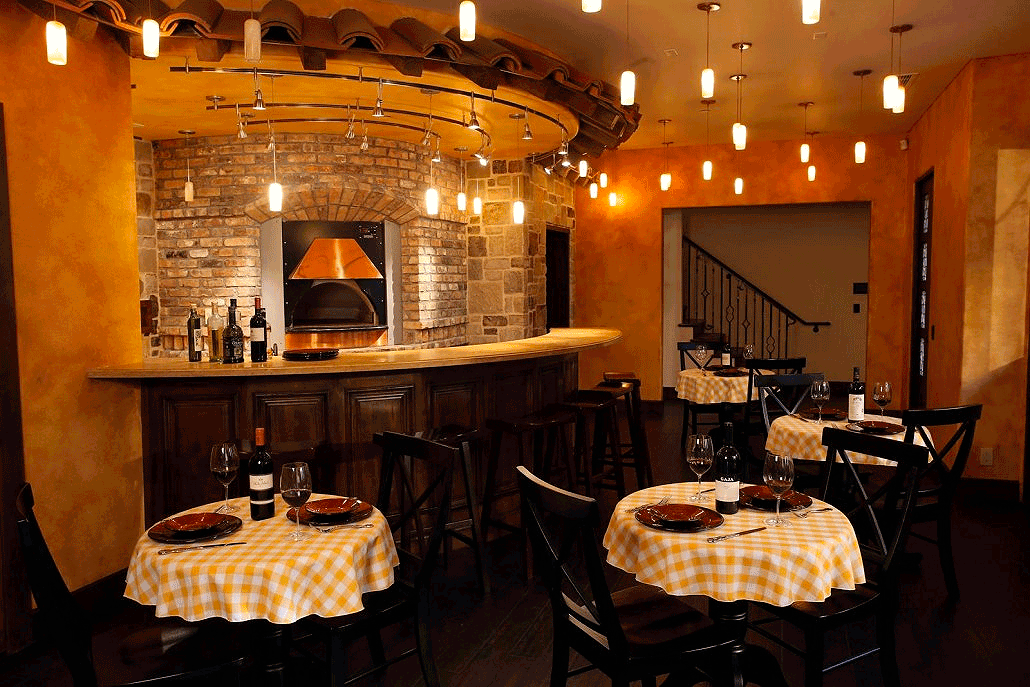
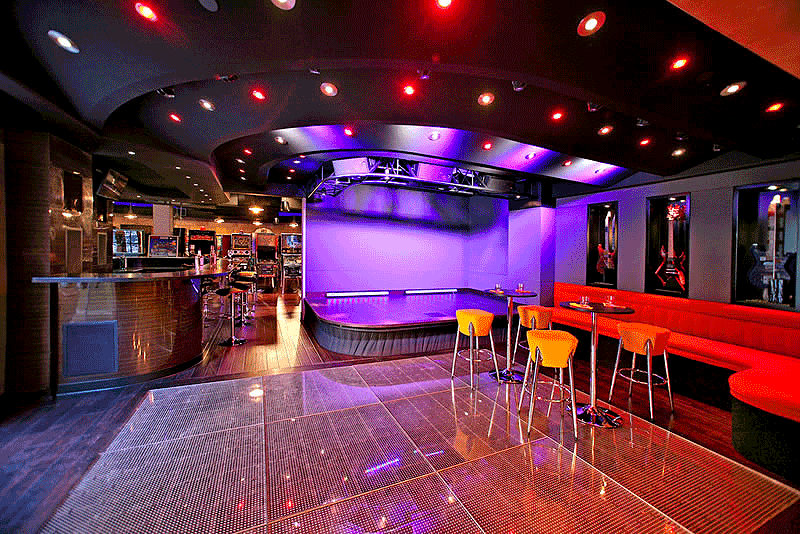
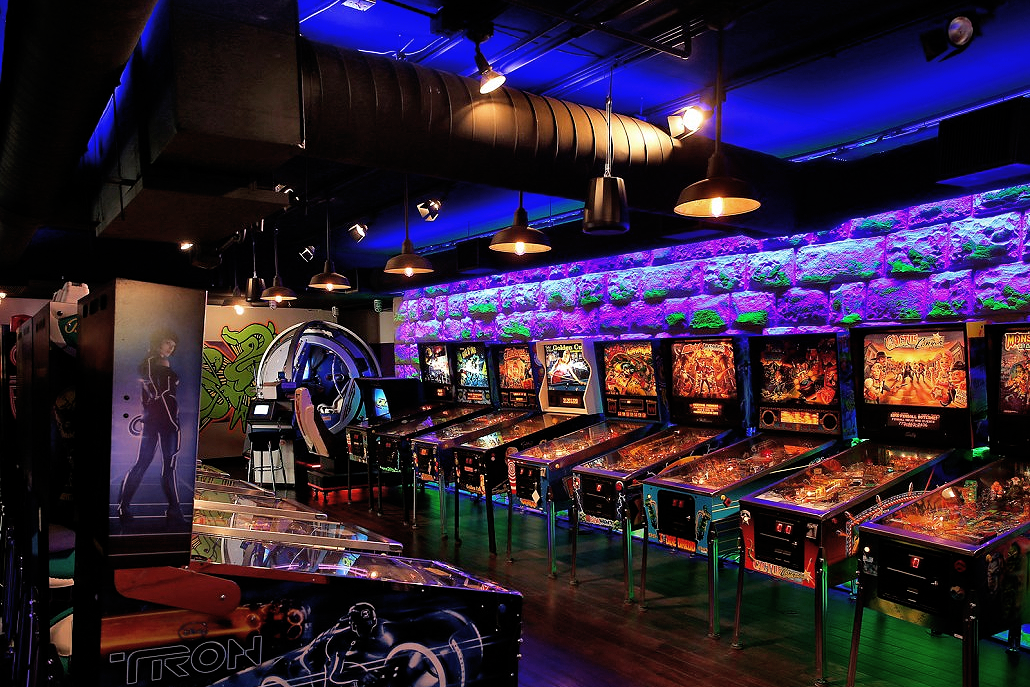
We ended up creating a city environment based on his desire to bring in Italian architectural influences. He sent me to Italy and I spent 10 days in Siena. I took about 2,000 photographs in nearby villages for reference. I came back and showed him some incredible charcuterie stores that sold cheeses, and pizzerias, and this and that, and he said, “Let’s do it.” The only things that were dictated by him were the arcade, because he had a very nice collection of pinball machines and video games, and the nightclub because he wanted to have gigs for jazz.
He basically gave me permission to go crazy. He didn’t ask me to do this village or do this or do that. I presented the ideas that he gradually grasped and accepted. It’s usually a collaborative effort. The client lets his imagination go to think about the things that mean something to him, and I put them into context.
Steve, you were obviously heavily involved in the theater space, but I would imagine you worked on the nightclub as well.
STEVE HAAS We were involved in all the spaces, really, because acoustics and audio mattered in the pizzeria, the arcade, and even the lobby. For all of these, we provided general noise control, sound containment, and acoustic treatment, as well as audio system design and calibration. But the premier spaces were the cinema, the nightclub, and the pizzeria. This wonderful client was just so open in sharing his goals and desires. In addition to his love for arcade games, he also loved live music. His daughters were both learning to play string instruments, so he wanted the ability to have everything from a more formal concert environment to a loose hangout type of club where you can have rock bands or jazz groups come and play. He can have a chamber trio performing in the theater and a rock band in the club with no sound bleed between them.
Somebody coming into the theater cold would think it’s just for watching movies, but it’s actually a fully-fledged performance space as well.
TK I want to remind you, Mike, that the theaters that have inspired me over the years were never just for watching movies. The movie palaces were mixed-use spaces where you could have an orchestra and also acrobats or a comedy act or whatever, which is exactly what the Paradiso can do. So it’s not like we suddenly came up with the novel idea of using a theater this way. This project brought us back, completed the circle to what the movie theaters were supposed to be.
Does the desire to be able to do live performances in a home theater come up very often with clients?
TK Yes, but usually at a much more elementary level.
SH It doesn’t happen nearly as often as it should. And, yes, that’s a biased perspective, but I think a lot of people just don’t realize what can be done. And even if you don’t go to the nth degree like we did with the Paradiso, there are many ways to upgrade a theater space, and it starts with the layout. You have to have the space to be able to have one to four people be able to play and perform, and have a system that can support it—not just audio, but lighting, because that’s different from what you need for a home theater system.
TK Because live performances require specific lighting, we brought in a very well-known lighting designer with a background in theater. This is probably the only project I’ve done in the US that incorporated so many different disciplines. It’s not just the clients who don’t realize all the possibilities. Even the designers cannot wrap their heads around how many wonderful things you can do in a space like that.
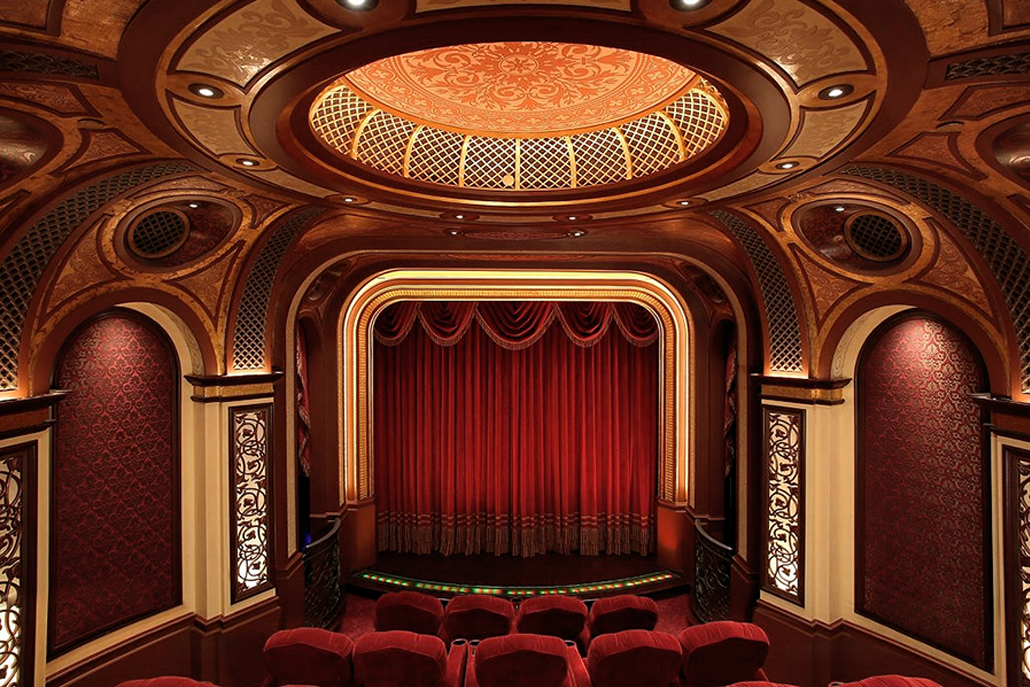
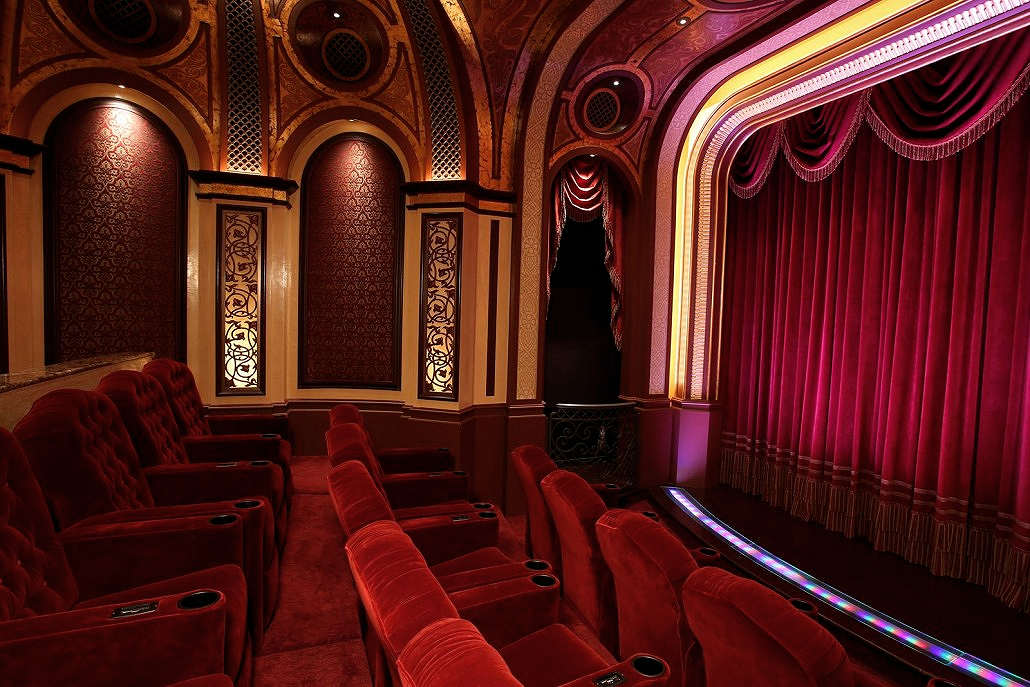
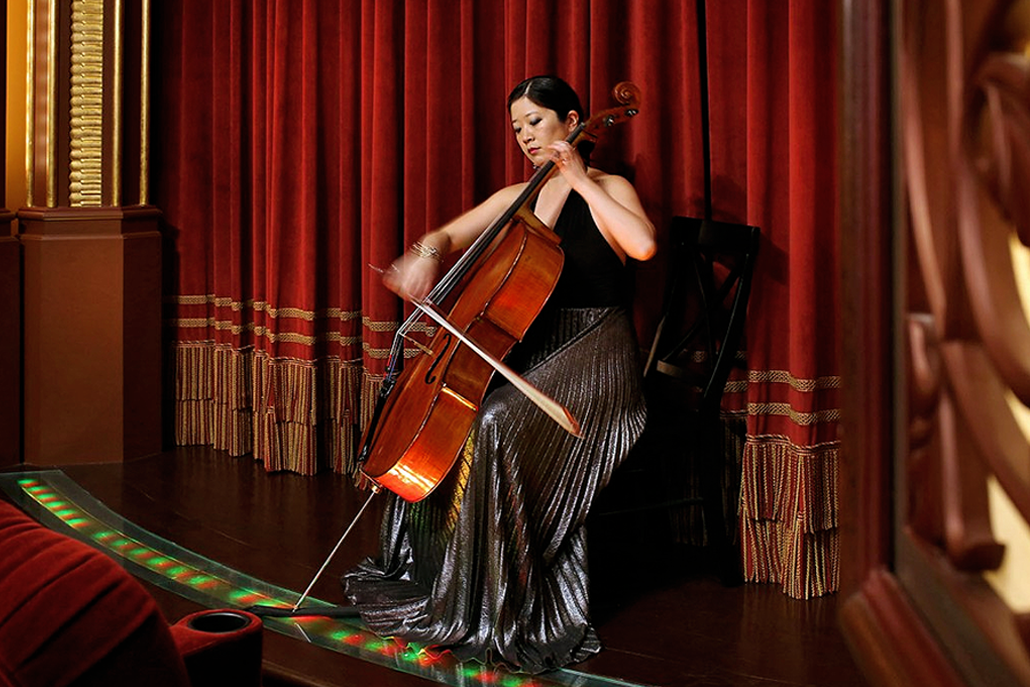
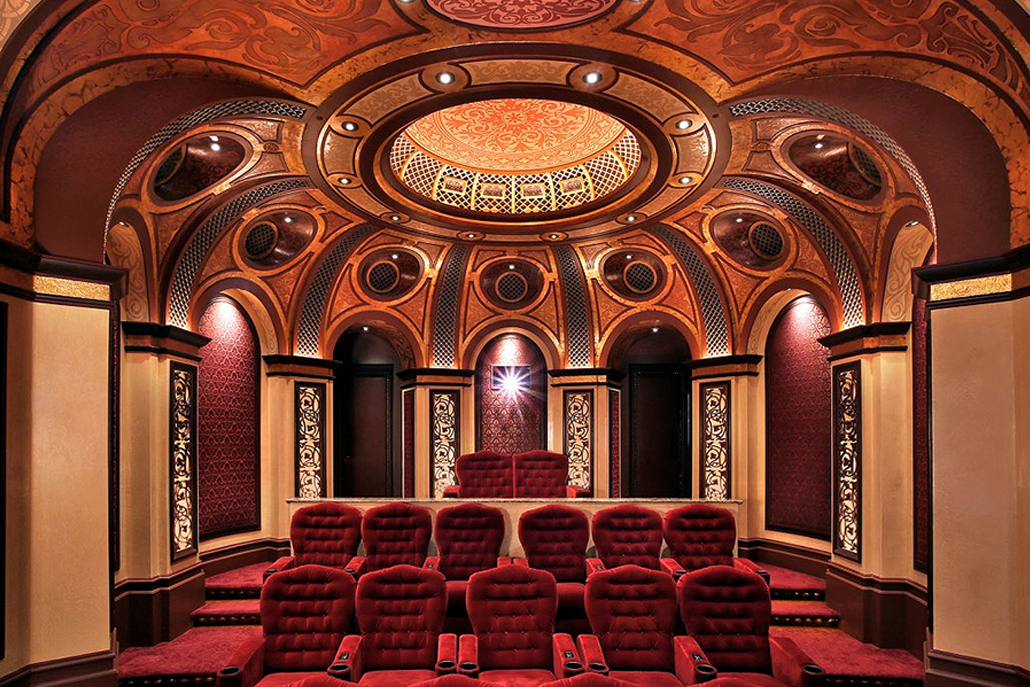
Steve, the theater had to have a traditional surround sound system for watching movies, but you also have your Concertino system in there for live performances. Are they two discrete systems or is there some overlap?
SH I think we did share a couple of components. Maybe some of the subwoofers were relay switched back and forth, but inherently quite independent.
There was a lot of control programming. If you could see all the bells and whistles switching behind the scenes, it would be amazing. Almost a dozen processes switched in a sequenced manner to go just from theater mode to live concert and back, but the user interface was as simple as pressing a button for the initial selection and then there were custom presets within each mode.
What did the Concertino system bring to this project in particular, given what the client wanted to do?
SH The Concertino, which is in the nightclub and pizzeria as well, expanded the ability to have various kinds of live music in an acoustically dry room. As Theo knows, we don’t design “dead” home theaters. However, even a mildly dry diffused home theater appropriate for cinema presentation doesn’t provide the right acoustic for many types of live music.
This acoustic-enhancement technology allows the performance space to become a true-sounding concert hall, cathedral, or any other space you can imagine. So if they want to have a choir, string orchestra, or even a jazz group with a bit livelier sound, you can do that and then blend it with more traditional amplified sound as needed.
I’ve heard that people have been in that space and didn’t even know there was processing going on because it sounded so authentic, or is that an exaggeration?
SH That’s exactly right. This is a world of difference from the Concert Hall and Cathedral modes you get in your car stereo or home receivers. This is recreating in the digital virtual electronic world exactly what a real hall of a different size, different shape, a different acoustic will do to enhance sound—the early reflections, reverberations in the proper timing and frequency manner. The technology can be described for days, but in the end it’s all about what happens when somebody presses a button and sits down and that string quartet, that cellist comes out, and just like, “Wow.” It’s just a great experience for performers and audience alike.
Theo, you weren’t here when Mike and I discussed how things are changing with music performances over livestream during the pandemic, but having spaces like this, whether it’s to this degree or even one or two degrees lower—I think a lot of affluent homowners are going to say, “You know what, I don’t want to be in a theater with 1,000 or 2,000 other people for quite some time. So why not create great-sounding spaces that will allow me to bring that type of experience home, literally, for not just movies, but for live music and other types of live entertainment?”
TK I am hearing from people, “I don’t want to go to the movie theaters and catch a disease. I want to make my house be more like a theater.” This is an incredible new opportunity. And it’s up to us to capture it and relay the message that you can have this kind of theater space in your home.
SH Am I hearing Theo saying he’s getting back into custom theaters again?
TK I do want to do custom theaters but very, very selectively. If there is something of the caliber of the Paradiso, I will do it.
Michael Gaughn—The Absolute Sound, The Perfect Vision, Wideband, Stereo Review, Sound & Vision, The Rayva Roundtable, marketing, product design, some theater designs, a couple TV shows, some commercials, and now this.
© 2023 Cineluxe LLC


